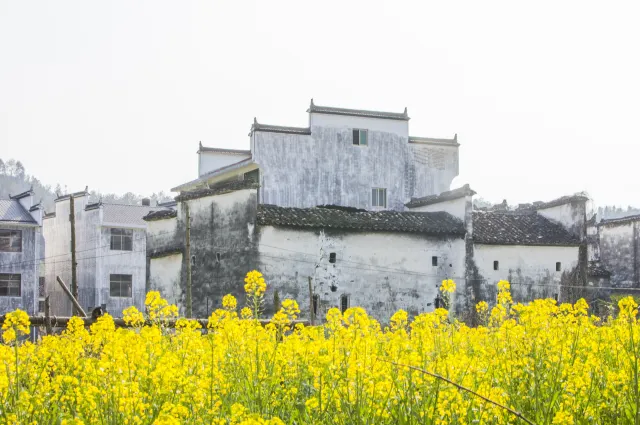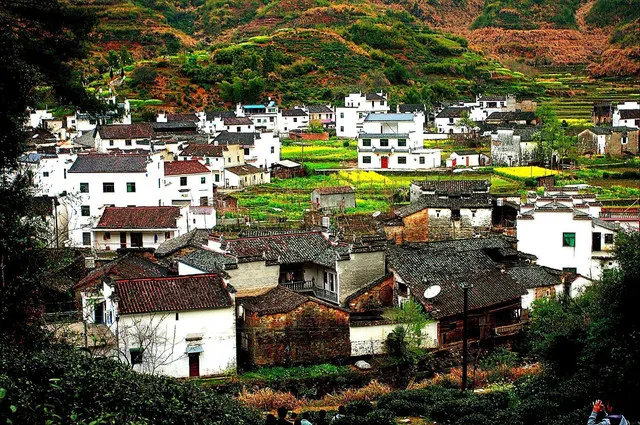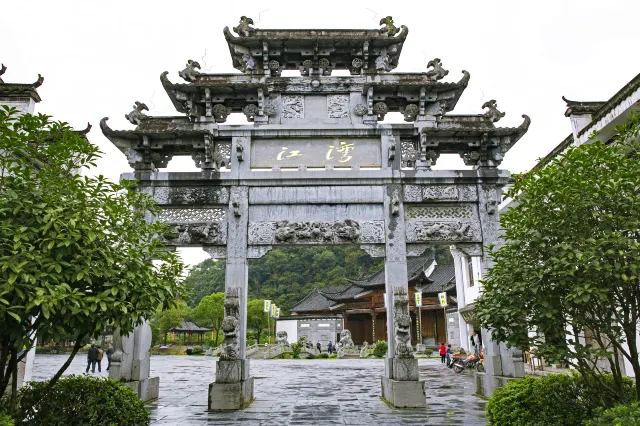The White Walled-Black Roofed Huipai Village with Horse-Head Walls: You Must Come to Wuyuan to Appreciate It Properly.
Catalogue
- Sixi-Yancun: 87 Pieces of Block Printed Pages from The Scene of "Ghost Story"
- Jiangwan: Look at The Extremely Unique Architectural Layout
- Jujing Village: China's Most Circular Village
Wuyuan is the source place of the ancient Huizhou culture. In most of the villages the intact Huipai architecture is still preserved: we can find white walls, black roof tiles, horse-headed walls, and exquisite stone carvings, brick carvings and wood carvings. When you come to Wuyuan, you must enjoy it a lot.
Likeng: The model of Xiaoqiao Liushui’s people Likeng is an ancient village that was mainly inhabited by people with the surname of Li. It is 12 km from Wuyuan. It is surrounded by mountains on all sides, and there are large oilseed rape fields in the village. After the spring has arrived, the mountains are covered in golden colors. Huipa architecture dominates the village. The streams of streets are linked to each other, and the bluestone roads are criss-crossed. It is a paragon of small bridges, flowing water and families. In ancient times there was a large number of talented people in Likeng. From Song to Qing Dynasties, more than a hundred government officials served here, and the literate people of the village have left behind 29 written works. During the Southern Song Dynasty, there was a brilliantly talented martial called Li Zhicheng. The village was his former residence. Therefore, in addition to its beautiful nature and scenery, it also has a profound cultural deposit, adding a strong historical flavor to the ancient village.

Sixi and Yancun are actually two completely individual villages connected by a brook and a road. Throughout history many officials and businessmen came here, so there are plenty of mansions in the village. Like the other villages in Wuyuan, this is also characterized by old Huipai architecture, but we can especially find exquisite "stone carvings, wood carvings, brick carvings." The 1987 edition of "Ghost Story" was set here, which really made Cixi-Yancun villages famous. Near the entrance of the scenic spot there is Yancun, and Sixi village is further away. You have to walk roughly 2 km to get there. There is a very large oilseed rape field between the two villages, but it’s beautiful in the spring when it’s not yet harvested. If we compare them, the scenery of Sixi Village is better; you can walk in the village on the Tongji Bridge that is just across the river.

Likeng: Have a taste of the most genuine Wuyuan lifestyle. Likeng is located in Tuochuan Township, Wuyuan County. The village was established in the last years of the Northern Song Dynasty. During these years, talented people came forth in large numbers, which gives it the reputation of a successful village deep in the mountains. Compared to the popular scenic spots in Wuyuan, Likeng is not that much commercialized, you can have a taste of the most authentic life. Likeng is also a good place to watch the Huipai architecture with enjoyment. More than 50 buildings of the Ming and Qing Dynasties adds details to the culture of humankind. There were many Ming Dynasty official departments such as “Shangshudi” of the Ministry of Education, "Yuguan Shangqing" of Ministry of Appointments, and "Sima Di" of the Ministry of War. The most ancient building was built 300 years ago and the majority of the former residences are still in use.

Wangkou: A Huipai ancient village with mountains on one side and waters on the other side. Wangkou is located in the northeast of Wuyuan County, on the bank of a large river. It’s a simple and unadorned ancient Huipai village, with hills on the opposite side. The water of the big river is very clear, just like green jade water, whihc is why it is called "Wangkou". Wangkou is ancient, and most of the local people here are surnamed Yu, which refers to their clan name. There was prosperous trading during the Ming and Qing Dynasties here and a commercial center was established here at that time. Until now the old houses and ancestral halls, are preserved intact. The shrine of the Yu Clan has a great amount of exquisite wood carvings, and is praised as a treasure house of architectural art. The village is not big; it takes roughly an hour or two to walk around.

Jiangwan is an ancient village that conveys the details of the generous cultural heritage of Huizhou. It is located in the northeast of Wuyuan County and is well-known for once being the hometown of the national leader, Jiang Zemin. The architectural composition of Jiangwan is extremely characteristic. From this high altitude you can have an overlook to a giant “’An” character, which means peace. The town preserves a large number of delicate Huipai architecture from the Ming and Qing Dynasties. Yi street and Liu alley are criss-crossed, each street and every alley mirrors each other; this is a simple and unadorned, graceful, self-contained scenery. The old streets in the town still preserved the charm of the Ming and Qing Dynasty periods. Among them, it feels like wandering through a time tunnel and experiencing the trading atmosphere of the ancient Jiangwan during Ming and Qing Dynasties.

Jujing Village is a typical model of rural villages surrounded by mountains and rivers. The small river is semi-circular. It takes about a weeks to get around the surrounding mountains. Therefore, it is praised as the most circular village in China. Local people call it basin village which stands near the mountainside. The whole village is covered by brooks and forms a perfectly round place. The architectural style of the whole village is characterized by Huipai houses with black walls white roof tiles and horse-headed walls which is very beautiful. If you climb to the small slope opposite to the village, you can completely overlook the tiny village surrounded by mountains and rivers. You can get the best results if you shoot with a wide-angle lens. If you shoot with a cell phone, you can try to take a panoramic view.
Trending Travelogues
Popular Trip Moments
Popular Travel Types
Popular Attractions
Popular Ranked Lists
Popular Destinations
Recommended Attractions at Popular Destinations
About











Site Operator: Trip.com Travel Singapore Pte. Ltd.







